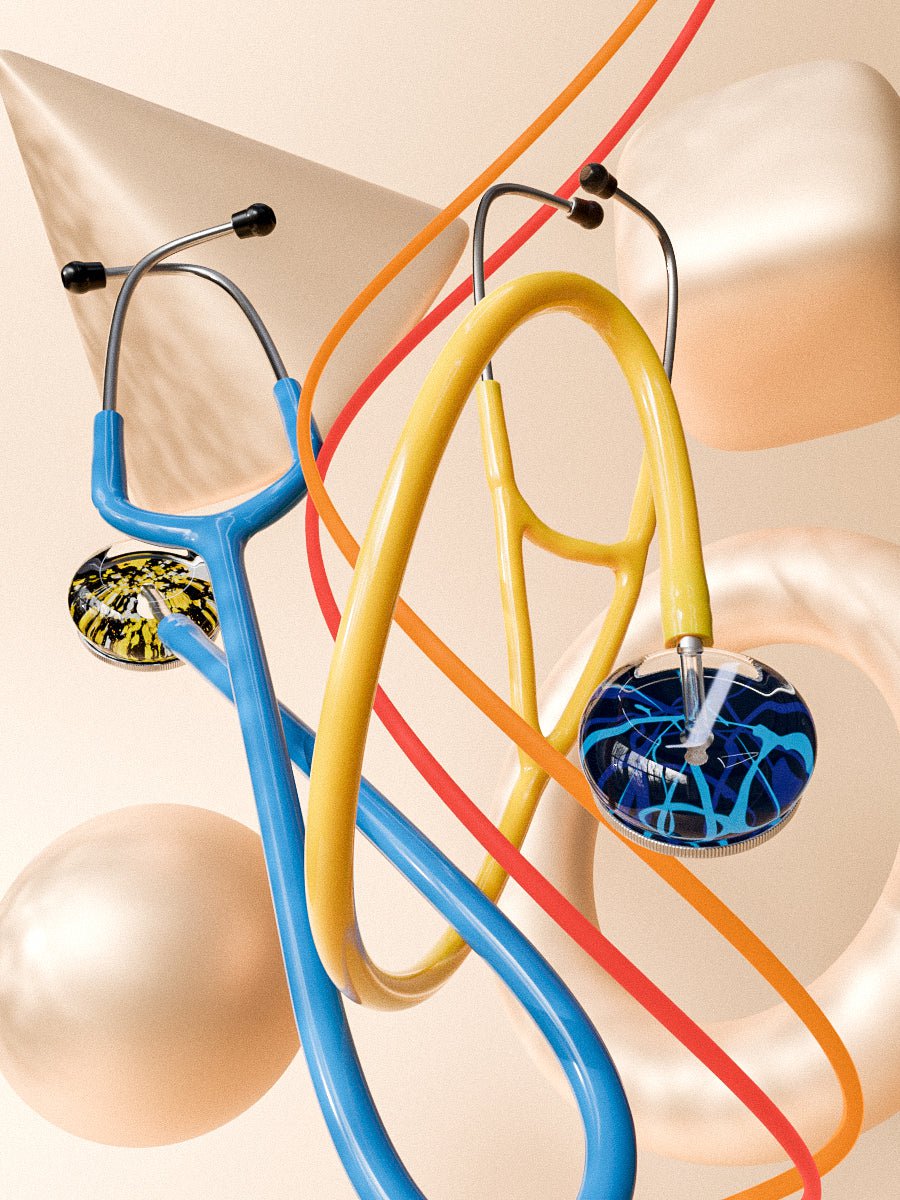For those in the medical health care profession, stethoscopes play a vital role in patient care and examination throughout the world's many clinics and hospitals. These medical auditory devices are used by doctors, nurses, and medical practitioners in order to gauge a patient's overall health by way listening for and detecting any abnormal sounds from the heart, lungs, or abdominal area.
Unfortunately, the stethoscope may begin to harden and even crack, resulting in a steady degradation of sound quality as time goes by. There are several reasons that play a factor in the hardening and subsequent degrading of the stethoscope, from its innate material to how the human body interacts with the stethoscope itself. You can also learn more about our Ultrascope customizable stethoscope.
In this article, we will be going into detail in regards to what makes a stethoscope harden and crack as well as what steps can be done to reduce these negative effects.
PVC Material
In order to have effective tubing at an affordable rate, most manufacturers will oftentimes use a material known as PVC. PVC (also known as polyvinylchloride) is often used in a number of different applications throughout the country from many different disposable medical devices to hospital flooring and ceiling and wall coverings.
Because of its affordability, however, PVC can be quick to deteriorate over time and break down. In the case of stethoscopes, in particular, they will often result in hardening with continual use before ultimately beginning to chip and break apart. Not only does result in a more worn-looking stethoscope, but it can also lead to a steady deterioration of sound quality.
PVC, as a material, is of such low quality, that many of the following reasons are largely due to the fact that the tubing is made from it. While we go over this later, one of the fastest and most effective ways to extend the life of a stethoscope is to invest in higher quality material. This removes the main factor, resulting in easily doubling the life of the stethoscope while in regular daily usage.
Human Skin Lipids
One of the more commonly talked about reasons, often in conjunction with the PVC material, is the skin lipids, particularly the ones around the neck. These, as well as the oils from hair follicles, have a detrimental effect on the rubber tubing, resulting in a quickened rate of hardening, cracking, and an ultimate loss of sound quality. It is because of this issue that most manufacturers advise against either solvent or oil use when handling a stethoscope.
A good method of extending the use of a stethoscope is by reducing the amount of time they are worn around or touching the neck. It is much more practical to carry the stethoscope in a front pocket.
Rubbing Alcohol
Working similarly to the aforementioned point, rubbing alcohol also is terrible for rubber and PVC materials. While one periodic swipe will probably not have too big an impact, continual usage of various hand sanitizers, rubbing alcohols, and cleaning agents will steadily eat at the rubber tubing, resulting in it ultimately becoming worn, frail, and vulnerable.
How to Extend the Life of Your Stethoscope
One thing that you should be aware of is that, because PVC naturally deteriorates over time, none of these methods will prolong the life of a stethoscope indefinitely. However, by following these steps, one can greatly extend the individual lifespan before replacement well beyond the initial manufacturer’s recommendation of every 2 years.
Invest in a Higher-Grade Material
The first and easiest method to extend the life of a stethoscope is by looking into and investing in options made from a more durable and higher quality material. Some manufactures will opt for a more durable material that does not break down nearly as fast. This method alone will result in a person's stethoscope lasting considerably longer while continuing to use it as they normally would.
The drawbacks to this option are largely due to the fact that, because of their materials being of higher quality, more durable options will cost more, making them less affordable for those without a large enough amount of capital.
Avoid wearing around the neck
A simple method of reducing the amount of damage done to a stethoscope during its use is by wearing them away from direct contact with the skin. This can be through a number of ways. They can be worn in a jacket's front pocket as well as under the collar flap. In either instance, because the material is not in direct contact with human skin, the materials are not being worn away.
Similarly, by purchasing a slipcover, the stethoscope can be worn around the neck considerably more often while remaining in a fit state for longer. This is due to the cover acting as a protective barrier between the stethoscope itself and prolonged contact with human skin.
Clean Regularly
Though this may sound initially quite counterintuitive, a stethoscope must be cleaned as often as possible. This process of cleaning washes away any potential chemicals or oils that have been exposed to it, allowing the device to be used for longer periods.
If looking to use this method, the cleaning solution must be free from any harsh or invasive chemicals. Using these stronger soaps may likely result in discoloration as well as an increased degradation of the tubing. Similarly, it is important not to submerge the stethoscope in cleaning materials, as this will also wear at its integrity.
Conclusion
Stethoscopes, despite being a mainstay for medical doctors and practitioners around the world, are not without their setbacks. It is important to understand where their structural faults are as well as their cause. Only at that point can more proactive steps be taken. These steps can vary from either choosing to reduce the damaging effects or simply look into investing in a more durable and higher quality alternative.





